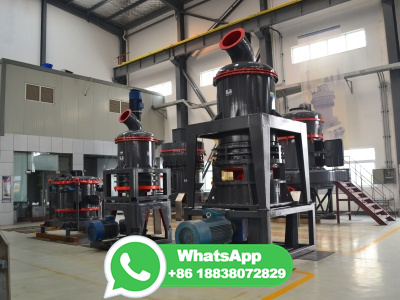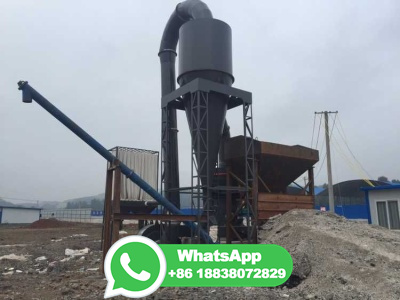Beijing chokes on yellow dust during biggest ...
· The sand and dust from Mongolia have moved eastward and southward over China''s northern regions, carried by the cold high pressure at the .
You can get the price list and a GBM representative will contact you within one business day.

· The sand and dust from Mongolia have moved eastward and southward over China''s northern regions, carried by the cold high pressure at the .

· The Mongolian economy contracted just more than five percent in 2020 due to the pandemic, but by 2021 was set for a recovery helped by higher prices for copper and coal, two of Mongolia''s major exports. Mongolia''s rank in the World Bank''s Ease of Doing Business index fell from 56 (of 189 economies) in 2014 to 81 (of 190 economies) in 2019.

Yellow Sand or Yellow Dust is also known as HwangSa in Korean. Q. What is Yellow Sand/Dust? Known more commonly as yellow dust by most of the foreign community, it is basically inhalable particles that originate from the dry desert regions of China and Mongolia. There has been yellow dust coming from these regions to Korea for many generations.

Use the images below to find out more about each case study. Amatrice Earthquake Case Study. Chile Earthquake 2010. Christchurch Earthquake. Haiti Earthquake. Japan Earthquake 2011. L''Aquila Earthquake. Lombok Indonesia Earthquake 2018. Nepal Earthquake 2015.

· Here are some of the most interesting facts associated with Mongolia. 10. Mongolia Has The World''s Coldest Capital City. Ulaanbaatar is the capital of Mongolia. It is loed in the country''s northcentral part at 1,300 m above sea level in a valley formed by the Tuul River. Nearly half of Mongolia''s population live in and around this city.

· Different Types of Ginseng. There three main different types of ginseng are Oriental, Siberian, and American. Oriental Ginseng (Panax) This type of ginseng has been used for thousands of years in traditional Chinese medicine. Panax ginsengs are adaptogenic herbs which help decrease sensitivity to stress.

· Mongolia is wellknown for its extreme weather; the difference between the maximum and the minimum annual temperature can go up to 100 degrees Celsius. Due to short summer, long winter and dominantly cold weather in between, farming, particularly vegetable and fruit farming, has not been developed well in the country. Sand Dunes, Gobi Desert

· The Pax Mongolica, Latin for "Mongol peace," describes a period of relative stability in Eurasia under the Mongol Empire during the 13th and 14th Pax Mongolica brought a period of stability among the people who lived in the conquered territory. After the death of the first Mongol emperor, Genghis Khan, in 1227, the resulting empire .

Mongolia is a landlocked country in Central Asia and East Asia, loed between China and terrain is one of mountains and rolling plateaus, with a high degree of relief. The total land area of Mongolia is 1,564,116 square kilometres. Overall, the land slopes from the high Altai Mountains of the west and the north to plains and depressions in the east and the south.

· Mongolia even replaced its traditional script with the Cyrillic alphabet. (The traditional script, however, continues to be used by ethnic Mongols in China). As Inner Mongolia was the more populated area before the partition, to this day the number of ethnic Mongols living in China outnumbers the population of Mongolia.

2 teaspoons crushed red pepper flakes. 2 tablespoons peanut oil. 2 tablespoons chopped garlic. 1 bunch Swiss chard rinsed, stems removed and cut into 1/2 inch slices. 2 green onions, cut into thin slivers about 2 inches long. 1 teaspoon salt. ¼ teaspoon black pepper. Add all ingredients to shopping list. View your list.

While Mongolian Beef isn''t an authentic Chinese dish, it gives an example of the ingredients and seasonings used in Chinese cooking. What kind of food do they eat in Mongolia? Boiled mutton, Tea mixed with camel, cow, horse or sheep milk, and .

· Here are some of the most interesting facts associated with Mongolia. 10. Mongolia Has The World''s Coldest Capital City. Ulaanbaatar is the capital of Mongolia. It is loed in the country''s northcentral part at 1,300 m above sea level in a valley formed by the Tuul River. Nearly half of Mongolia''s population live in and around this city.

Sand is a granular material composed of finely divided rock and mineral particles. Sand has various compositions but is defined by its grain size. Sand grains are smaller than gravel and coarser than can also refer to a textural class of soil or soil type;, a soil containing more than 85 percent sandsized particles by mass.. The composition of sand varies, .

· Mongolian gerbils live in the Gobi Desert and the steppe, which is a desertlike grassland. These habitats are in central Asia, spread between China and Mongolia. They are dry and experience temperature extremes, high and low. There are several gerbil predators encountered, such as Pallas s and marbled poles.

· The Great Wall of China is an impressive outline of walls commissioned during the Ming Dynasty in northern China as a fortress to wade of invasion by other communities. The Ming dynasty constructed the wall measuring 5,500 miles long. The first walls were built around 7th century CE. The scale of the wall is so big that construction was carried out from east to west .

· Mongolia. What is most land in Mongolia used for? Wiki User. ∙ 05:28:17. Study now. See Answer. Best Answer. Copy. animal grazing. Wiki User. ∙ 05:28:17. This answer is:

· The sand shouldn''t be deep enough for your gerbil to burrow. Rather, you just want enough sand for your gerbil to roll and around, rub itself, and play! You should use a dish that is greater than 1 ( centimeters) in depth.

· The way Mexican culture treats death and dying is different from what many people are used to. Rather than shy away from the subject of death, Mexican tradition addresses the issue openly and honestly. You can observe this difference in the Mexican celebration known as the Day of the Dead. Each year on November 2, people in Mexico, and ...

Fracking is the process of drilling into the earth and directing a highpressure mixture of water, sand and chemicals at a rock layer in order to release the gas inside. The wells can be drilled ...

· Sand. Mongolian gerbils live in a sandy environment and sand as a substrate would create a more naturallooking environment for them in captivity. Sand is sometimes used as a substrate as long as it''s sterile but is also used as a bath for gerbils just like chinchillas use a sand or dust bath.

· When to Use Sand on Icy Driveways. Whereas rock salt melts ice, sand does not. Sand, because it is an abrasive material, is applied to icy roads to provide traction.

Desert Rose Uses. A Desert Rose is a selenite gypsum that occurs naturally. It''s most often the combination of Selenite and Barite and forms through a process of moisture condensation.. The Selenite clusters together and creates a mass. This mass is then subjected to the elements present around it, like wind erosion and sand.

Visiting Mongolia, you may only see a handful of remains of these older walls, but in China they are more visible. 20. The Khongor Singing Sand dunes are loed in the Gobi Desert. There are certain conditions for the sands to produce a "roaring" or "booming" sound.

· Reported on RBA (gone, don''t panic.) But is this a legit split or hope over expectation? John

In Mongolia, this plant commonly known as "Tsulihir, and Sandrice", is widely used in local foods. The seeds are an ingredient in most traditional milk products and mainly used to prepare flour and tea material. This specialtasting flour is mixed with milk and eaten for breakfast.

· Different Types of Ginseng. There three main different types of ginseng are Oriental, Siberian, and American. Oriental Ginseng (Panax) This type of ginseng has been used for thousands of years in traditional Chinese medicine. Panax ginsengs are adaptogenic herbs which help decrease sensitivity to stress.

· Here is a list of the different animals that live in the Gobi Animals Takhi (Equus przewalskii) Takhi, also known as Przwalski''s horse, is the last wild horse breed in the world. It is a relative of common domestic horses found all around the globe. There are 1200 Takhi worldwide, and 60 in Mongolia..

Glass sand from Kauai, Hawaii 2. Dune sand from the Gobi Desert, Mongolia 3. Quartz sand with green glauconite from Estonia 4. Volcanic sand with reddish weathered basalt from Maui, Hawaii 5. Biogenic coral sand from Molokai, Hawaii 6. Coral pink sand dunes from Utah 7. Volcanic glass sand from California 8.

Use the images below to find out more about each case study. Amatrice Earthquake Case Study. Chile Earthquake 2010. Christchurch Earthquake. Haiti Earthquake. Japan Earthquake 2011. L''Aquila Earthquake. Lombok Indonesia Earthquake 2018. Nepal Earthquake 2015.

· Mongolia. What is most land in Mongolia used for? Wiki User. ∙ 05:28:17. Study now. See Answer. Best Answer. Copy. animal grazing. Wiki User. ∙ 05:28:17. This answer is: